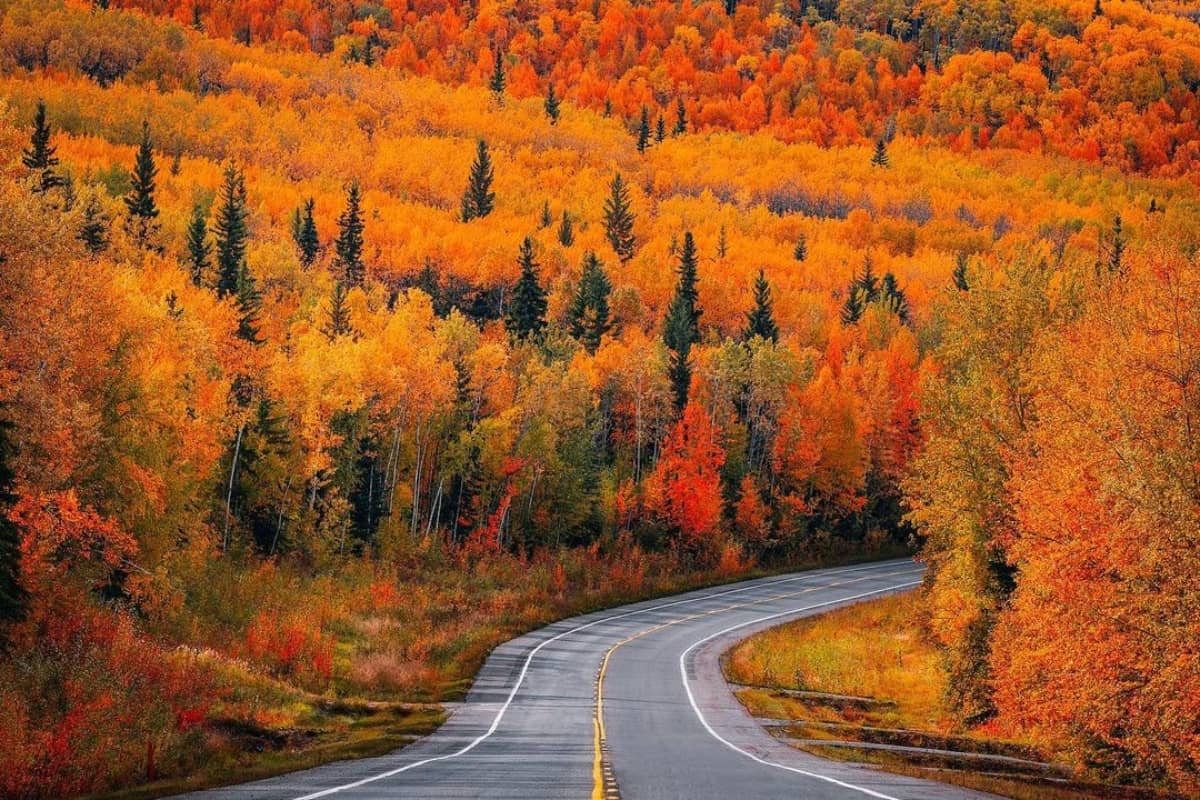Fall in Delta Junction, Alaska, is a magical season, with vibrant colors painting the landscape as the leaves change. Visitors are treated to breathtaking views of aspen groves glowing in shades of gold, orange, and red, set against the rugged Alaskan wilderness. However, despite the beauty of this time, several hidden dangers can accompany an autumn trip to Delta Junction. While it may seem serene, understanding these hazards is essential to ensure a safe and enjoyable experience. Here are six hidden dangers travelers should be aware of during fall foliage season.
1. Sudden Weather Changes
Delta Junction’s subarctic climate can present sudden and extreme shifts in weather. In autumn, temperatures can drop unexpectedly, with freezing conditions arriving early in the season. One moment you could be enjoying a mild, sunny day, and the next, you might find yourself in a freezing downpour or even an early snowstorm. Because of its northern latitude, Delta Junction also experiences rapid decreases in daylight as fall progresses. In September, you might still get over 12 hours of daylight, but by October, the days shorten considerably, making it harder to plan full days of outdoor activities. Always pack layers, even if the forecast looks favorable, and carry gear like waterproof jackets, gloves, and warm hats.
Additionally, the weather here is unpredictable in terms of wind conditions. Strong gusts can arrive without warning, making it hazardous for those hiking in open areas or driving along scenic roads. The gusts are often stronger near the Tanana River and other open expanses. Checking weather forecasts frequently and being prepared for sudden changes is crucial.
2. Wildlife Encounters
Delta Junction is home to diverse wildlife, including moose and bears, which are especially active during the fall as they prepare for the long Alaskan winter. While these animals are incredible to observe in their natural habitat, encounters can be dangerous if not handled properly. Moose, for example, can become aggressive if startled, especially during mating season, which coincides with the peak fall foliage period. They are particularly dangerous around water sources like lakes and rivers, where they go to feed.
Bears are another major concern, as they forage for food to build fat reserves for hibernation. Both black and grizzly bears inhabit the region. Hiking trails in fall are quieter than in summer, so bears may be less accustomed to human presence. Carrying bear spray, making noise while hiking, and keeping food stored properly can reduce the likelihood of a dangerous encounter.
3. Limited Daylight and Navigational Challenges
By the time fall arrives, Delta Junction is already seeing significantly fewer daylight hours. While this adds to the charm of experiencing Alaska’s wilderness in a golden hue, it can pose challenges for those unaccustomed to navigating in low-light conditions. As the season progresses, the lack of daylight can make outdoor activities like hiking or photography more difficult, especially in remote areas where artificial lighting is scarce.
The reduction in daylight can also make it tricky for drivers unfamiliar with the roads. Scenic routes that offer stunning views during the day can become treacherous when darkness falls earlier than expected. Ensure that you start outdoor activities early and allow plenty of time to return before nightfall.
4. Slippery and Icy Terrain
One of the most dangerous aspects of fall in Delta Junction is the slippery and icy terrain that develops as temperatures fluctuate. In autumn, daytime temperatures may be mild, but as night falls, wet ground often freezes, creating patches of black ice on roads and trails. Hikers and drivers alike should be cautious, as these ice patches can be difficult to spot, especially when covered by fallen leaves.
Hiking trails along the Delta River or in surrounding mountainous areas can be particularly hazardous. Fallen leaves, while beautiful, can obscure slippery roots and rocks, making falls more likely. Proper footwear with good grip is essential, and trekking poles can provide additional stability for hikers.
Driving on scenic routes like the Richardson Highway requires extra caution. Even though roads may appear clear, early morning frost can linger in shaded areas, creating hazardous driving conditions. Reducing speed and allowing extra time to reach your destination is advisable.
5. River Crossings and Water Hazards
Fall in Alaska also brings its share of water-related hazards, particularly in areas with rivers, like the Delta River. As snow begins to melt from the surrounding mountains and the occasional autumn rains swell rivers, water levels can rise quickly. While crossing rivers may seem straightforward, currents can be deceptively strong.
Flash floods are a risk in certain areas during heavy rainfall, especially in low-lying sections of the trails. This is a concern not only for hikers but also for those camping near water sources. Be mindful of the weather and avoid crossing rivers if the water appears swift. Checking trail conditions beforehand can help avoid potentially life-threatening situations.
6. Remote Locations and Limited Services
Delta Junction and the surrounding areas are remote, with limited services and infrastructure. In the fall, many of the facilities that cater to tourists in summer begin to close, reducing access to essential services like gas stations, stores, and medical aid. Cell phone service can be spotty or non-existent in more remote regions, leaving travelers vulnerable if they experience vehicle trouble or an emergency while on the road.
Traveling through remote parts of Delta Junction requires careful preparation. Ensure that your vehicle is in good condition and carry extra fuel, food, water, and emergency supplies, including a first aid kit and a portable GPS device. Let someone know your travel itinerary, especially if you plan to hike or camp in isolated areas.






